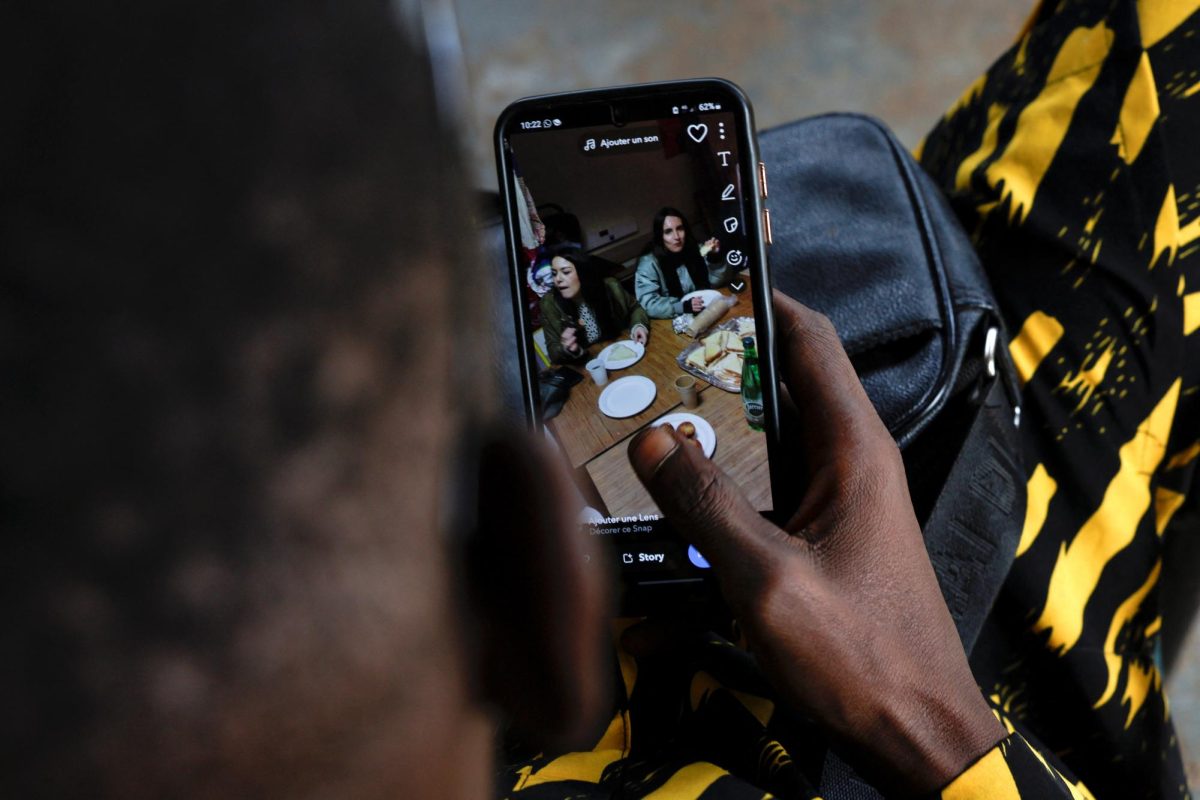I don’t want to talk or even think about how much screen time I get every day. Between looking at my phone, doing schoolwork and watching TV, I know it’s probably several hours. It stresses me out to think I’m spending that much of my life just staring at a screen. But it’s unavoidable, because we’ve made it that way.
Phones are integral to teenage social life. Social media functions the way that cable TV did for our parents: it creates collective pop culture references, a shared experience, a common link. The same way our parents’ generation watched and discussed MTV in high school, we all eventually see and reference the same viral videos. The difference is that the TV show happened at a fixed place and time; we can watch TikToks any time and any place.
At the end of a long, hard day at school, there’s nothing most teenagers want more than to shut off our brains and watch easily digestible content. It’s so enjoyable to scroll endlessly as an algorithm feeds me content it knows I will enjoy, or at least it feels that way while I’m doing it. In awkward social situations, the temptation is strong to reach into your pocket, pull out your phone and let your mind wander someplace more comfortable. But what ends up happening is that you spend hours scrolling without even realizing it, putting off homework and forgetting about the other things you enjoy. In fact, phones and screen time can even lead to anxiety, depression, fear, loss of sleep and many other negative mental health effects (columbiapsychiatry.org).
But none of this is our fault. TikTok, Instagram Reels and other similar apps are literally designed to hook us and keep us watching. According to Anna Lembke, a Stanford psychiatrist and the author of a book on this topic called “Dopamine Nation,” scrolling on social media can cause a spike of dopamine production in our brains in the same way using drugs like heroin or meth would.
Yet this problem isn’t treated like an addiction or even taken seriously. Parents blame kids, calling them lazy. When a kid won’t socialize with their friends because they’d rather just watch TikToks, their parents might agonize over the fact that the kid is being antisocial, but they’ll ignore the problem right under their noses: that their child has an addiction. Many parents are hypocritical — criticizing their kids for using their phones while being just as addicted themselves.
Maybe the problem is that admitting that many people are addicted to their phones means admitting we need to make some serious changes as a society. Our lives have become so enmeshed in technology, and indeed, so improved by technology, that it’s impossible to imagine a world where tech takes the back seat. But maybe that’s what needs to happen. We need to recognize when we’ve crossed the line, know when to slow down and be able to admit when we’re wrong. And regarding the issue of teenage phone addiction, it’s past time for those changes.
Still, I don’t know what those changes would look like. I only know that I feel the need for them. One thing I do know is that the solution isn’t to just tell teenagers to look at their phones less; to do so would be to turn a blind eye to the reality of phone addiction. The change must be social and societal.
As the first generation of people to grow up in the digital age, we’re kind of like lab rats in the “What happens to kids with cell phones?” experiment. While this often feels like a burden, it’s also an opportunity. We can figure out how to lead fulfilling, happy lives in our tech-filled world. It may seem bleak now, but it doesn’t have to be forever.










